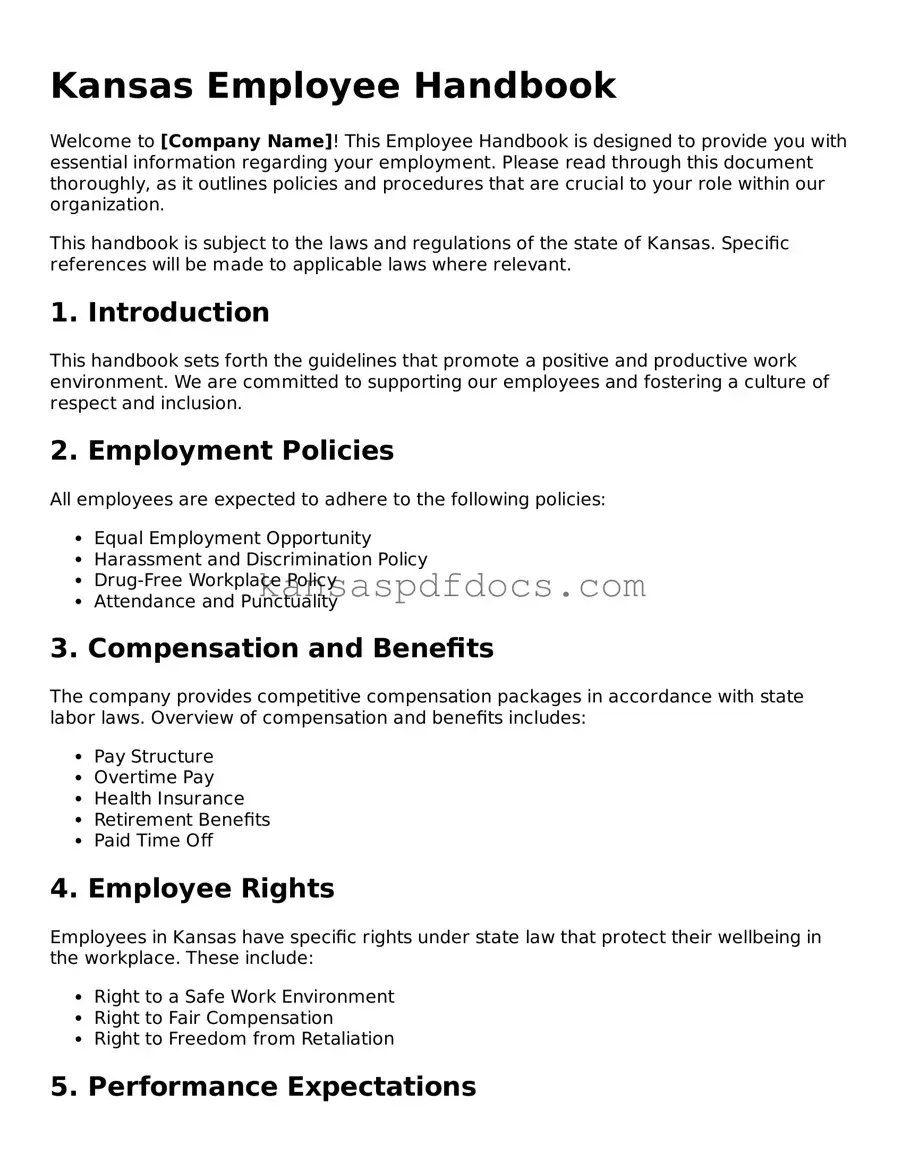Creating an employee handbook is an essential step for any business in Kansas, as it serves as a vital resource for both employers and employees. This handbook outlines the company's policies, procedures, and expectations, providing clarity and consistency in the workplace. Key aspects of the Kansas Employee Handbook form include an introduction to the company's mission and values, guidelines for workplace conduct, and details regarding employee benefits and compensation. Additionally, it addresses important topics such as attendance, leave policies, and disciplinary procedures, ensuring that employees understand their rights and responsibilities. By establishing clear communication through the handbook, employers can foster a positive work environment while also protecting their legal interests. The form also emphasizes compliance with state and federal laws, helping businesses navigate the complexities of employment regulations. Overall, a well-crafted employee handbook is not just a document; it is a foundational tool that contributes to a harmonious and productive workplace.
